Sarah Robinson | Interior Painting
How to Use Japandi Style in Your Home
Japandi style has become a bit of a buzzword recently, but if you're wondering what exactly it is, you're not alone! This perfect marriage of design styles focuses on the concept of minimalism, but in slightly different ways. Even though these regions are far apart, they have a lot more in common than you might expect!
What is Japandi?
Japandi is an emerging style trend that combines two types of design: Scandinavian and Japanese minimalism. Scandinavian design focuses on clean lines, simple minimalist shapes, natural materials, and pale colors. The idea behind it is to bring in some brightness by making the most of limited sunlight in the winter months.
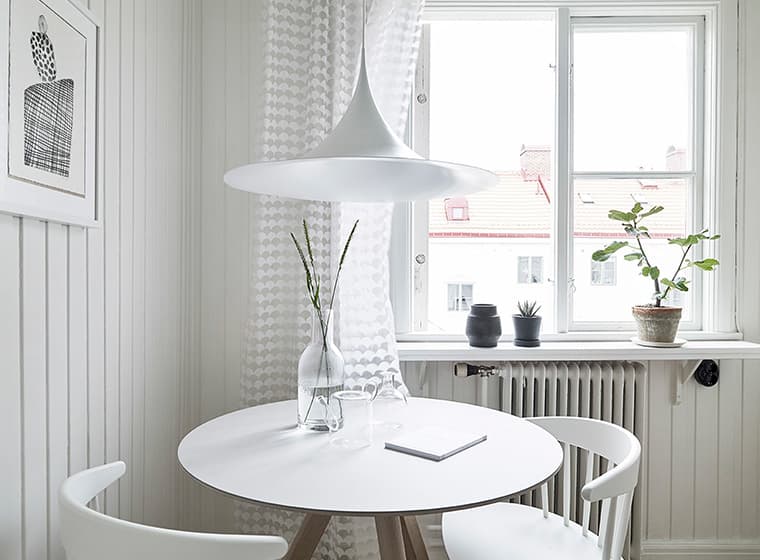
Japanese minimalism is a bit different-it also features clean lines and natural materials, but emphasizes negative space, which can make rooms feel sleek and a bit more like a museum. Japanese design also features the concept of wabi-sabi, which highlights the beauty in imperfect, impermanent, and incomplete objects or spaces.
When you look at them separately, you can see the differences clearly. Scandinavian design can sometimes feel a bit too rustic, whereas Japanese minimalism can feel a bit too sleek and almost like a museum. The combination of these styles results in spaces that embrace natural elements, highlight the space itself by leaving more open space, but also still have that cozy, lived-in feeling.
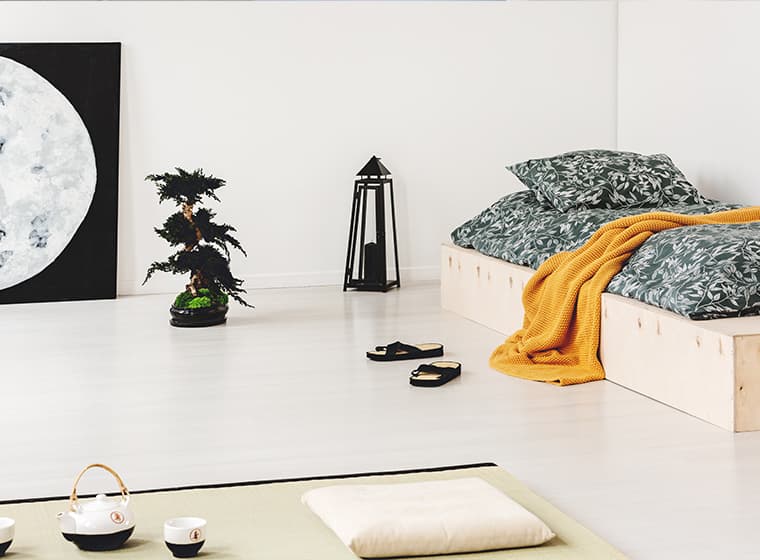
What are Japandi Colors?
When creating the perfect Japandi room, you'll want to find the base for your color palette. Overall, the colors are closer to classic Scandinavian styles, focusing on neutrals. However, instead of using classic all-white, the Japanese element is brought in with warmer neutrals. Think warm white, cream, brown, beige, as your base colors. You can add in more color with shades of blush pink, muted blues and greens, and gray and black for a hint of drama. (Darker colors should be used more sparingly, of course!)
To create the perfect balance between the styles, add in pops of color through accessories instead of on the walls. The focus should always be on creating balance-use natural elements to ground the space and bring in the brighter or darker colors in smaller amounts.
Japandi Bedroom
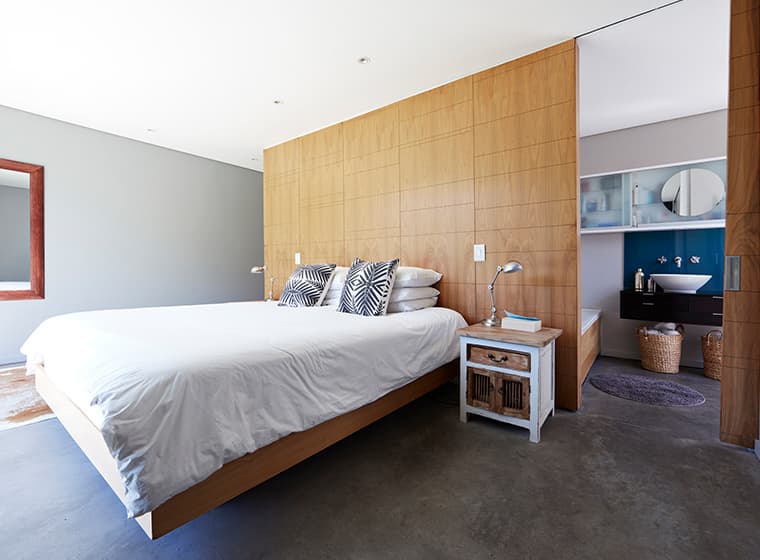
A bedroom should feel like a sanctuary. This is what makes Japandi style so perfect for bedrooms-the simple, uncluttered style is ideal for relaxing and gently drifting off to sleep after a busy day. The key is to keep things simple and not too busy. Choose a warmer color for the walls to give the room that cozy feeling-a warm white, soft muted pink, or a gentle beige.
Bring in elements of wabi-sabi through natural fabrics like washed cotton and accent pieces with interesting and unexpected textures, like rough edges. For the Scandinavian element, choose furniture pieces in light wood or sleek white, and crisp white lamps with a cool sculptural element.
Japandi Bathroom
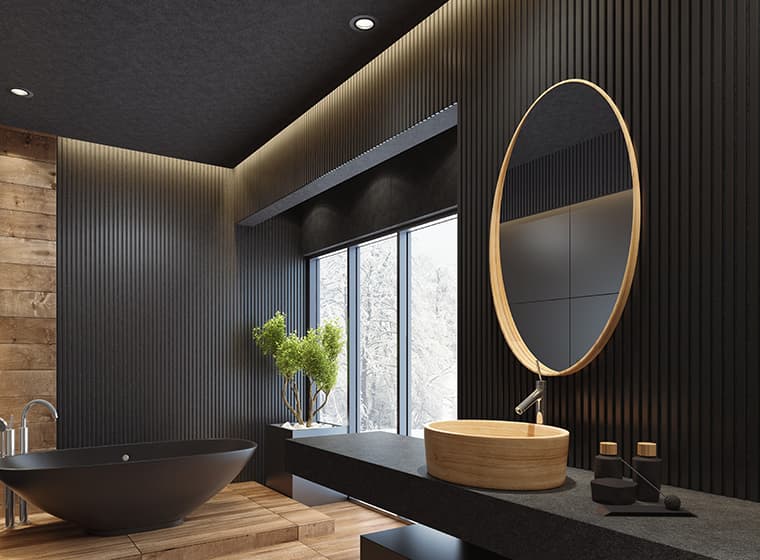
The perfect Japandi bathroom feels like a sleek, modern spa. While you might normally go with classic white or lighter walls for a bathroom, this is your chance to experiment with something darker. Gray or charcoal on the walls will give the space a sophisticated feel, while lighter wood, stone, and crisp white elements help to create that all-important balance.
If you're set on light walls, you can create that crucial contrast with darker wood or tile floors, darker wood cabinets, or darker countertops.
Japandi Kitchen
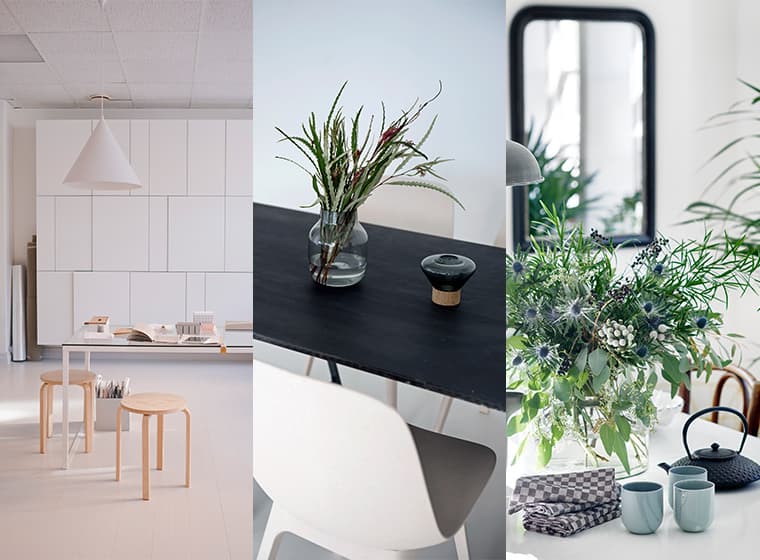
The kitchen is often the center of a home. It's where people naturally gather to catch up at the end of the day, or during a party. You want this space to have a bit more energy, to encourage lively conversation and get you excited about spending time in the space. This means you can make some bolder choices when it comes to color. In a kitchen, you can play with darker colors on the walls, as long as you balance it out with some contrasting cabinets and furniture that brings in some natural elements. Or, you could keep the walls lighter and use dark slate tiles and darker cabinets to create the contrast. Go with warm tones of wood and bring in color through accessories.
Japandi Living Room
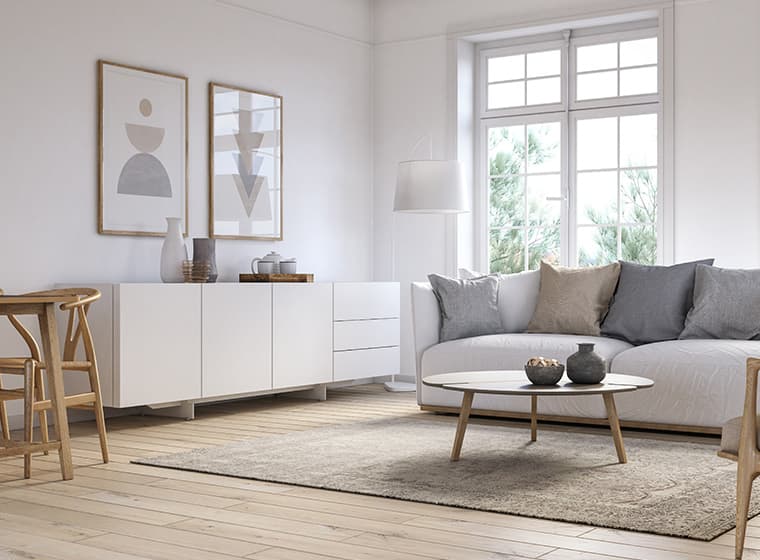
Living rooms also offer a chance to get creative with Japandi design. These rooms tend to be a bit larger, which means you can go a bit heavier on the darker colors. If you go with lighter Scandinavian tones on the walls, let your furniture ground the space by choosing pieces in slightly darker wood or darker fabrics. Or, try the opposite and go with a deeper tone on the walls and keep the furniture in lighter colors. Use a large piece of furniture or a funky lamp as a focal point for the room and bring in color through accessories and textiles.
